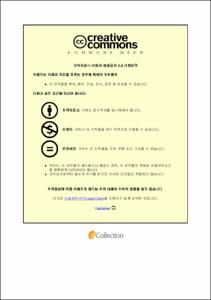한국인 영어 학습자와 원어민 학위 논문에 나타난 상위담화 비교 연구
- Abstract
- The purpose of this study is to see Korean EFL(English as Foreign Language) learners' overall awareness of metadiscourse and pragmatic competence. For this, it examined 20 Ph. D theses and investigated the way in which they used hedges and boosters; 10 were written by Korean EFL students and the other 10 were written by English native research students. Due to the fact that the writing style can be affected by writers' major, data were collected from 3 different fields; English language and literature, Business, Engineering. It used a corpus of over 2,000 pages and 0.54 million words.
The findings in the quantity analysis show that both Korean students and English native speakers use more hedges than boosters in their doctoral dissertation. As for using hedges, Korean EFL students employ more hedges than English native speakers. This result can be interpreted that Korean students are much conscious of readers' evaluation, so they are cautious when they claim a proposition.
The quality analysis suggests that Korean EFL students and English native speakers have different preference of employing words. In the use of auxiliary, English native speakers prefer ‘may’, but Korean students like ‘should’ the most. The Korean students' use of ‘should’ indicates their lack of pragmatic competence, because they use ‘should’ with the same meaning as ‘must’. In addition, Koreans do not prefer using ‘know’ and ‘think’ but intensively employ ‘show’. Moreover they frequently use impersonal phrase to indicate the proposition is not a personal opinion. Consequently, it can be said that Korean EFL students can not utilize diverse verbs and they are reluctant to write a strong assertion.
Through the use of hedges and boosters, Korean students reveal their pragmatic competence and vocabulary skills are not enough. It means they are not bad at English writing but unskilful at applying appropriate words in writing. To achieve better pragmatic competence, explicit education on the concept of metadiscourse and the pragmatic function of vocabulary not limited to dictionary meaning should be recommendable.
- Issued Date
- 2016
- Awarded Date
- 2016. 8
- Type
- Dissertation
- Publisher
- 부경대학교 대학원
- Affiliation
- 부경대학교 대학원
- Department
- 대학원 영어영문학과
- Advisor
- 한지원
- Table Of Contents
- Ⅰ. 서론 1
Ⅱ. 이론적 배경 및 연구 방법 6
2.1. 상위담화(metadiscourse) 6
2.1.1. 상위담화의 정의 6
2.1.2. 상위담화의 분류와 기능 7
2.2. 유보어(hedges)와 강조어(boosters)의 개념과 분류 11
2.2.1. 유보어의 개념과 기능 11
2.2.2. 강조어의 개념과 기능 12
2.2.3. 본 연구에 유보어와 강조어 분류 기준 13
2.3. 연구 방법 18
2.3.1. 분석 자료 18
2.3.2. 분석 방법 18
Ⅲ. 결과 및 논의 21
3.1. 발생 빈도와 단어 개수 21
3.1.1. 전체 발생 빈도 21
3.1.2. 유보어 빈도 24
3.1.3. 강조어 빈도 25
3.1.4. 단어 개수 26
3.2. 어휘 분석 27
3.2.1. 유보어 상위 빈도 어휘와 특징 27
1) 서법성과 개연성 29
2) 동시성 34
3) 선호 동사 36
4) 비인칭 구문 38
5) 선호 부사 40
3.2.2. 강조어 상위 빈도 어휘와 특징 41
1) 편중된 동사 사용 42
2) 인지 동사의 부족 43
Ⅳ. 결론 45
참고문헌 48
부록1 52
부록2 54
- Degree
- Master
- Files in This Item:
-
-
Download
 한국인 영어 학습자와 원어민 학위 논문에 나타난 상위담화 비교 연구.pdf
기타 데이터 / 841.41 kB / Adobe PDF
한국인 영어 학습자와 원어민 학위 논문에 나타난 상위담화 비교 연구.pdf
기타 데이터 / 841.41 kB / Adobe PDF
-
Items in Repository are protected by copyright, with all rights reserved, unless otherwise indicated.